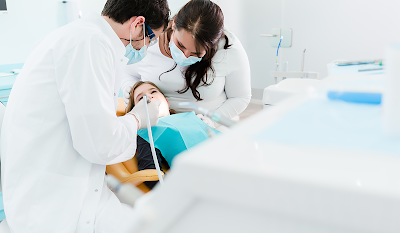What Can You Expect from a Dental Checkup?
What is Oral Cancer Screening?
No checkup is complete without this procedure. It is essential to look for lumps or abnormalities in the soft tissues of your mouth.
During oral cancer screening, the doctor will look for precancerous lesions. If they do, they may prescribe a biopsy.
Early detection of this type of cancer increases the chance of a good prognosis.
Why are Dental Checkups Important?
Dental checkups are vital because they prevent many oral conditions like a periodontal disease – the infection of the bone and tissues surrounding it. During a checkup, the hygienist may perform cleanings to remove plaque and tartar buildup (tartar is the hardened plaque).
If unremoved, the gums inflame, and periodontal disease begins. The first stage is gum inflammation and is reversible, and you must seek treatment before it worsens.
What are the Stages of Periodontal Disease?
If this condition is untreated, you may lose one or many dental pieces. The stages are the following:
1. Gingivitis - It is the inflammation of the gums. You may notice they bleed while you brush or floss your teeth and tartar buildup, and you should look for dental cleanings near you if you do. By undergoing a professional cleaning and performing excellent oral care habits at home, you may reverse Gingivitis.
2. Periodontitis - Our dentist in Flagstaff is an expert in treating periodontitis. Symptoms are gum recession (your teeth look large), bad breath, bleeding when brushing teeth. Our team will plan root planing and scaling to treat it.
The procedure consists of eliminating plaque and calculus from the teeth and roots. Afterward, they are smooth and reattach to the dental pieces in about a month. We suggest not postponing treatment because it can only worsen.
3. Advanced periodontitis – The most severe stage is advanced periodontitis. Teeth move around a lot (it seems they may fall out on their own), patients have chronic bad breath, and their gums are swollen, red, and hurt.
The treatment for advanced periodontitis depends on the severity. In some cases, the dentist will Schedule curettage or root planing for removing the infected tissue from the roots, but it may not be enough. You may require bone and gum grafting due to the bone and gingiva recession. In this procedure, the doctor transfers bone from a donor site to a recipient one. It stimulates your body to grow more bone, and your dental pieces retain in the socket.
When the shifting is too much, not even bone grafting helps, and you must undergo dental extractions. Keeping infected teeth in your mouth may cause severe problems like abscesses and even sepsis. If your doctor pulls out the damaged teeth, you should look for prosthodontic treatments like dental implants and dental crowns.
Do Not Wait to This Point!
Prevention is the key to excellent oral care. Keeping up with your checkups will help maintain a healthy smile and periodontitis far away!






